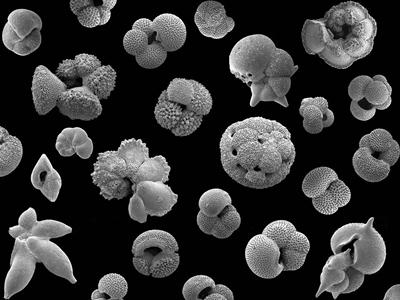Study analyses the impact of carbon dioxide on Earth’s climate 30 million years ago

One way to make better predictions of global warming in the coming centuries is to look at climate change in the geological past.
In research published in Nature Communication (DOI: 10.1038/s41467-020-17887-x) an international team of university experts from Germany, USA and UK – including the University of Southampton – has taken a closer look at the climate during the Eocene Epoch more than 30 million years ago, when global temperatures were around 14 degrees C warmer than present day.
They discovered that the influence of atmospheric carbon dioxide (CO2) on a warm Earth could be even greater than previously assumed.
The Eocene Epoch occurred between 56 and 34 million years ago - the most recent greenhouse period in the Earth's history, associated with such global warmth that temperate rainforests which could be found on Antarctica and crocodiles occupied the humid swamps that covered North America and parts of Europe. Throughout the Eocene however, the climate dramatically cooled and the Epoch ended with the major transition to the icehouse climate we currently experience, with the glaciation of Antarctica.
Until now, it was unclear how the development of climate and CO2 during this period were related. Recent climate model studies have suggested that warm climate is more sensitive to CO2 changes than a cold climate. This could be of particular importance to our future climate as CO2 increases and the Earth continues to warm. In the new study, this has now been extensively tested for the first time by scientists from the GEOMAR Helmholtz Centre for Ocean Research in Kiel, Germany, and the Universities of Southampton, Cardiff University, the Open University, the University of Bristol and the University of California.
From surface water acidity (pH) and estimates of the calcite saturation state of the ocean, the authors calculated how atmospheric CO2 evolved through the Eocene. The data used was obtained by studying the boron isotope composition of fossil shells of ancient marine plankton deposited on the seafloor during the Eocene. It was collected on expeditions by the International Ocean Discovery Program (www.iodp.org).
The novel CO2 record provides a new and comprehensive view of Eocene climate evolution, and gives strong evidence for a link between CO2 levels and the warm climate state. It reveals how volcanism, weathering of rocks, and burial of organic material influence the natural concentration of CO2 and hence climate. By comparing this new CO2 record with information on how the climate cooled the study also reveals that Earth is more sensitive to CO2 change during the early parts of the Eocene when the climate was at its warmest.
“This work was carried out using the mass spectrometers and clean labs housed in the Geochemistry Group in the School of Ocean and Earth Sciences,” said Dr Tali Babila, post-doctoral researcher from the University of Southampton and co-author of the study. “It’s only by using this world-leading kit that we can measure the tiny amounts of boron in the foraminifera to the required precision.
“Now that we have demonstrated that the climate is more sensitive when it is warm, like it was during the Eocene, the next step is to work out why this is and make sure this behaviour is well represented in the climate models that are used to predict our future climate,” Dr Babila continued.
Professor Gavin Foster, Professor of Isotope Geochemistry in Ocean and Earth Science at Southampton added: “These methods really allow us to get a unique insight into not only how the climate system varied in the past, but why. Indeed, it’s this ability to accurately reconstruct atmospheric CO2 in the past that means we can determine climate sensitivity millions of years ago, providing a powerful test of the understanding that is encapsulated in the state-of-the-art climate models that are key to predicting our future warmth.”
The study, Proxy evidence for state-dependence of climate sensitivity in the Eocene greenhouse – which also involved Dr Thomas Chalk from the University of Southampton and mainly funded by the Natural Environment Research Council (NERC) – is published in Nature Communication.